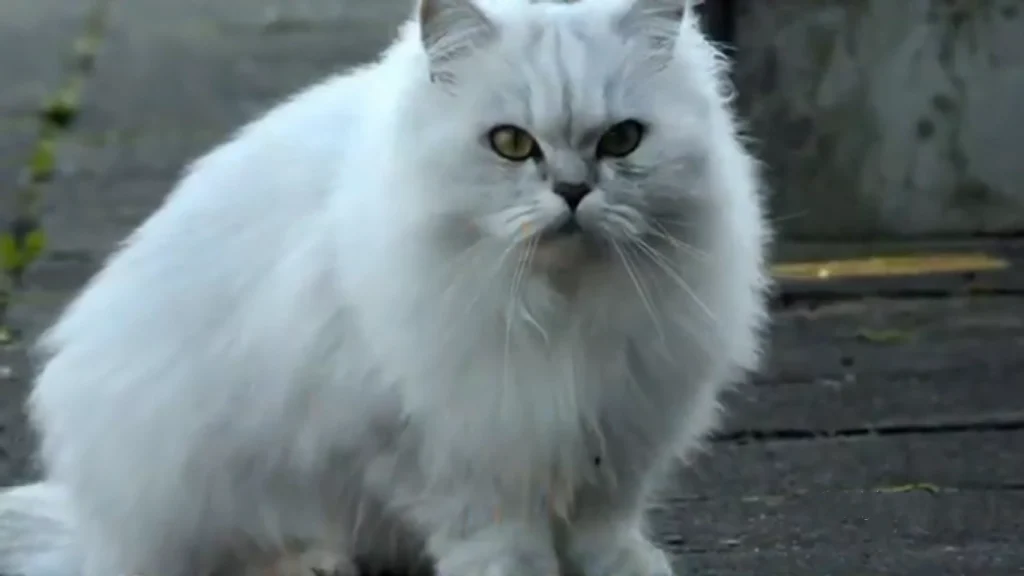How to Make Cats’ Fur Softer: Proven Tips for a Luxurious Coat
By: Elizabeth Rikas

The information in this article is intended to educate cat parents and is not a substitute for veterinary guidance. In case of any concerns about your cat’s health, please talk with your veterinarian.
Cats are beloved pets that offer companionship and comfort. As cat owners, many wonder how to enhance their pet’s coat for a softer and more attractive feel. One key to achieving a luxuriously soft fur is through proper diet, regular grooming, and attention to skin health.
A well-balanced diet rich in essential nutrients will not only benefit a cat’s overall health but also improve the texture of its coat. Additionally, consistent grooming helps remove loose hairs and distribute natural oils, keeping the fur shiny and smooth. By paying attention to these elements, cat owners can see significant improvements in their pet’s fur.
In this article, tips and techniques will be shared to help anyone looking to make their cat’s fur softer and healthier. From the right foods to the best grooming practices, readers will learn how to provide their feline friends with the care they need for a beautiful coat.
Key Takeaways:
- A balanced diet plays a crucial role in coat quality.
- Regular grooming maintains fur softness and shine.
- Lifestyle changes can significantly impact skin and fur health.
Click to explore: Split Claws in Cats
Understanding Cat Fur and Skin Health
Cat fur and skin health are essential for a cat’s overall well-being. A shiny, healthy coat reflects good nutrition and proper care. Understanding how fur and skin function helps owners maintain their cat’s beauty and comfort.
The Anatomy of Cat Fur
Cat fur consists of different layers that serve various functions. The outer layer, called the guard hairs, protects against weather and rough surfaces. Beneath this layer are the softer undercoats that provide insulation and warmth.
Each hair follicle produces oil, which keeps the fur soft and shiny. This oil also helps protect against dirt and pests. A healthy fur structure allows it to trap heat in cold weather and keep cats cool when it’s warm.
Nutrition’s Role in Fur Health
Nutrition plays a vital role in maintaining a cat’s fur quality. A diet rich in animal-based proteins, healthy fats, and essential vitamins ensures that the fur is shiny and vibrant. Omega-3 and Omega-6 fatty acids are particularly beneficial.
Feeding a balanced diet with high-quality ingredients can reduce shedding and decrease dandruff. Foods containing taurine and vitamin E can also promote healthy skin, which supports a healthy coat. A meat-based diet rich in digestible fats is often recommended for coat health.
Recognizing Common Fur Problems
Common problems with cat fur can signal health issues that need attention. Dandruff may appear as flakes on the coat or skin, indicating dryness or poor nutrition. Shedding is normal, but excessive fur loss can suggest stress or health problems.
Regular grooming can help minimize these issues. It removes dirt, dead hair, and skin cells, promoting skin health. If a cat’s fur looks dull or unkempt, it might be time to reevaluate its diet or consult a veterinarian. Monitoring changes in fur condition helps identify problems early on.
Essential Nutrients for Soft and Lustrous Fur
To achieve a soft and shiny coat, a cat’s diet must include specific nutrients. These nutrients play a vital role in maintaining fur health and vitality. Key elements include vitamins, omega-6 fatty acids, and antioxidants.
Vitamins for Fur Vitality
Vitamins are crucial for a cat’s overall health and directly affect fur quality. Vitamin A promotes healthy skin, which is essential for a soft coat. This vitamin can be found in animal-based proteins and is vital for cellular repair.
Vitamin E is an important antioxidant that protects the skin from damage. It helps to keep the fur looking bright and shiny. Foods rich in these vitamins, such as wet food and some high-quality dry food, can be beneficial.
Additionally, biotin is another essential vitamin, known for improving coat texture. Including these vitamins in a cat’s diet contributes significantly to the softness and luster of their fur.
The Importance of Omega-6 Fatty Acids
Omega-6 fatty acids are critical for maintaining a healthy coat. They help to lock in moisture, keeping the skin hydrated. A well-moisturized skin leads to a silkier fur texture.
These fatty acids can be found in high-quality cat food, especially those that include ingredients like fish or chicken fat. Many cat owners find that adding specific omega-3 and omega-6 supplements enhances their cat’s coat condition.
Regularly incorporating these fats into the diet promotes not just softness but overall skin health. A balanced intake of omega-6 fatty acids helps reduce shedding and improves the cat’s coat’s shine and smoothness.
Click to explore: Do cats actually eat mice?
Daily Grooming and Care
Daily grooming is essential for keeping a cat’s fur soft and healthy. Regular care can help manage mats and tangles while reducing shedding. This section covers best grooming practices, how to manage mats and tangles, and grooming tips for different coat types.
Best Grooming Practices
Brushing a cat regularly is crucial. For most cats, a daily brush is ideal. It helps distribute natural oils, keeping the fur shiny. Use a brush with soft bristles for short-haired cats and a slicker brush for long-haired breeds. Brushing also removes loose fur, which can reduce shedding.
Introduce brushing gradually. Start with short sessions and offer treats to create a positive experience. If a cat resists, don’t force it. Try again later. Additionally, during the grooming session, check for any skin issues or parasites, such as fleas.
Click to explore: Can Cats Eat Pumpkin?
Managing Mats and Tangles
Mats and tangles can be uncomfortable for cats. They can lead to skin irritation if not addressed. It’s essential to check for mats, especially in long-haired breeds, around the ears, underarms, and behind the legs.
If a mat forms, use a detangling spray to loosen it. Gently separate the mat with fingers or a comb, starting at the edges. If a mat is too tight, consider using specialized mat combs or, in severe cases, consult a professional groomer. Regular brushing will significantly help prevent mats from forming in the first place.
Click to explore: Can Cats Eat Dragon Fruit?
Grooming Tips for Different Coat Types
Different coat types require different grooming techniques. For short-haired cats, brushing once a week is typically sufficient. A rubber brush can help capture loose hairs effectively and stimulate the skin.
Long-haired cats need more attention. They should be brushed daily to prevent tangles and mats. Using a wide-tooth comb and then a slicker brush can be beneficial.
Cats with thick undercoats, like Maine Coons, may also require de-shedding tools to reduce shedding and maintain softness. Understanding the specific needs of a cat’s coat type will enhance grooming effectiveness and keep fur looking healthy.
Lifestyle Factors Affecting Coat Quality
Lifestyle choices play a significant role in the health of a cat’s coat. Factors such as whether a cat is indoor or outdoor, along with proper weight management, can greatly affect coat quality.
Indoor vs. Outdoor Cats
Outdoor cats are exposed to a variety of elements that can influence their fur. They may develop thicker fur for protection against weather changes. However, exposure to dirt, parasites, and harmful substances can also damage their coat.
Indoor cats often have less wear and tear on their fur. They benefit from stable environments with controlled temperatures. Yet, indoor cats may lack the natural wear that helps keep fur healthy. Regular grooming is essential. It helps distribute natural oils and removes loose fur. Indoor cats may need more help in maintaining a soft, shiny coat.
Weight Management for Coat Health
Weight plays a crucial part in coat health. Overweight cats may struggle to groom themselves effectively. This lack of grooming can lead to matting and an unkempt appearance.
Maintaining a healthy weight promotes better grooming habits. A balanced diet with quality protein and fats is important. Feeding a meat-based diet can improve coat softness. Regular playtime and exercise can help keep a cat’s weight in check. This also stimulates healthy skin and fur by increasing circulation.
In summary, understanding these lifestyle factors can help cat owners maintain a soft and beautiful coat for their pets.
Frequently Asked Questions
Many cat owners seek ways to improve their pet’s fur softness and shine. This section addresses common inquiries regarding natural remedies, diet, supplements, and home care practices that contribute to a healthy coat.
Conclusion
Achieving a softer, more luxurious coat for your cat is within reach with the right care and attention. By focusing on a balanced diet rich in essential nutrients, regular grooming, and maintaining skin health, you can significantly enhance your cat’s fur texture and shine. These simple yet effective practices not only improve your cat’s appearance but also contribute to their overall well-being.
From understanding the role of omega fatty acids to mastering daily grooming routines, this guide provides actionable tips to transform your cat’s coat. Whether your feline friend is indoor or outdoor, these strategies ensure their fur remains soft, healthy, and radiant. With consistent care, your cat’s coat can become a testament to their health and happiness.

About the Author
Elizabeth Rikas
Elizabeth is a passionate advocate for feline health and well-being, drawing from her years as a dedicated pet parent to three cats—Gypsy, Swan, and Alfred—and her invaluable experience volunteering at animal shelters. A seasoned writer with a lifelong love for cats, Elizabeth began sharing her insights in her teens and has since contributed extensively to platforms focused on feline care. Through her expertise and heartfelt dedication, she empowers pet owners with practical advice and research-backed knowledge to nurture their furry companions.
